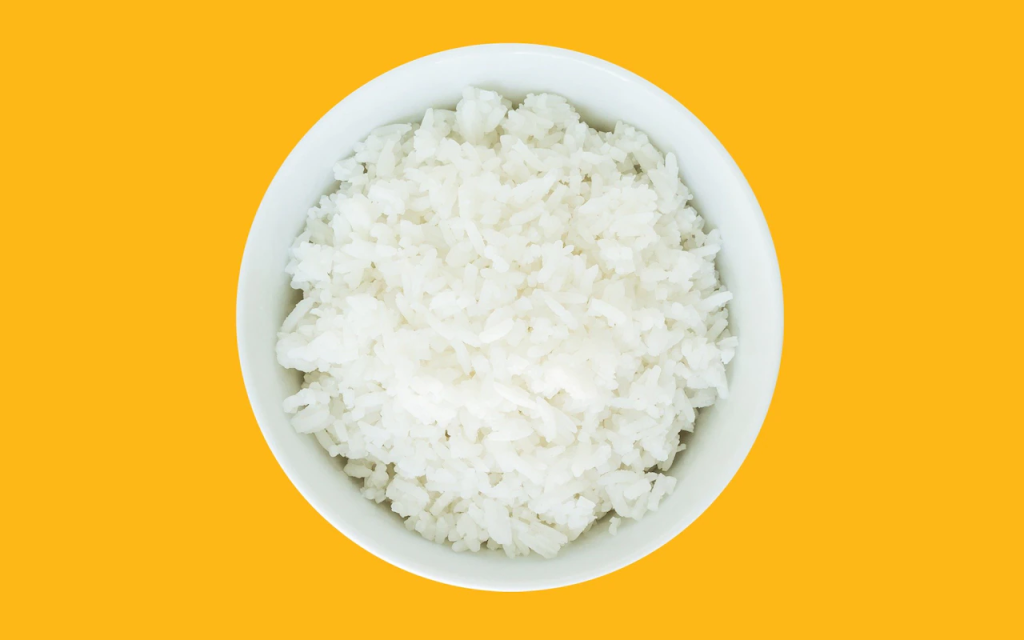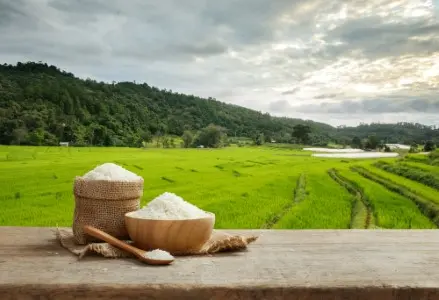Tags
The health truths of white rice – from basmati to risotto
The average Briton eats 5.6kg of white rice a year. But how much and which type should you eat to ensure you don’t pile on the pounds?

Apart from being a staple food for over half the world’s population, we’re also rice fans in the UK, with 80 per cent of the population buying it – predominantly white rice. According to the Rice Association, the amount eaten per person per week has grown 530 per cent since the 1970s, with 88 per cent of UK households buying rice. And with the rise in popularity of Thai, Indian, Japanese and Chinese cuisine, the average Briton consumes around 5.6kg of rice per year.
However, if your rice steamer is permanently in use, it may be time to look at your consumption – and the type you’re consuming.
“In general, white rice is a refined grain, meaning that the outer bran and germ have been removed during processing, leaving mostly the starchy endosperm. This process strips away many nutrients, such as fibre, vitamins and minerals,” says Nichola Ludlam-Raine, a specialist registered dietitian and the author of How Not To Eat Ultra-Processed.
Portion size
The problem with rice is we tend to eat far too much of it at one sitting. For most adults, a portion of 70-80g of uncooked rice (around 180-200g once cooked) is appropriate for a meal. “This is roughly the size of a fist,” says Ludlam-Raine – far smaller than a portion from your average takeaway.
Our activity level plays a key role in determining how much we need. “For sedentary individuals, a portion around 60-75g (uncooked) may be sufficient, while those who are more physically active might need 100-120g (uncooked) or more to meet their energy demands,” says Ludlam-Raine.
Nutritional values of rice
“Around 80-90 per cent of white rice is starch, which turns into molecules of sugar when digested, adversely impacting on our blood sugar levels,” explains Natalie Burrows, a registered nutritional therapist. Keeping blood glucose levels within a healthy range can reduce the risk of diabetes and heart disease.
“From a health point of view, I wouldn’t recommend eating white rice more than once a week,” notes Burrows. “We need 30g of fibre a day and most white rice contains under 1g of it per 100g”. Eating plenty of fibre is associated with lower risk of heart disease, stroke, Type 2 diabetes and bowel cancer. On the whole, white rice contains very low levels of protein, minerals and vitamins – it doesn’t have enormous value nutritionally.
If you’re going to eat white rice, go for the long-grain variety which tends to have a lower glycaemic index than short-grain varieties. Some, such as basmati, have a higher amylose content which slows down the digestion and release of sugars into the bloodstream. “What’s more, longer grains are less sticky and take longer to digest, further moderating the glucose response,” says Ludlam-Raine.
How to cook it
“Soaking rice before cooking can reduce the cooking time and may also help lower levels of arsenic, a naturally occurring contaminant found in some types of rice,” Ludlam-Raine advises. High intake of arsenic is associated with an increased risk of cancer, heart disease and Type 2 diabetes.
While both cooking methods are healthy, there are some subtle differences between steaming and boiling rice. “When you boil rice, some water-soluble nutrients, such as B vitamins and certain minerals, can leach out into the cooking water if it’s discarded. With steaming, less water is used, so there’s slightly less nutrient loss,” says Ludlam-Raine. “Rice cookers typically use a mix of steaming and boiling, depending on the model, and they often preserve nutrients well,” she adds. Pair rice with beans, lentils, or tofu to boost its nutritional profile and create a more balanced meal.
https://www.telegraph.co.uk/health-fitness/diet/nutrition/healthiest-white-rice/
Published Date: October 14, 2024






